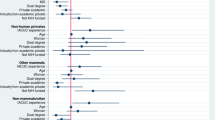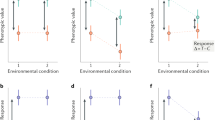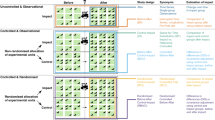Abstract
It has been 45 years since Russell and Burch first proposed the concept of the '3Rs', yet it remains unclear how those individuals involved in animal research view and implement these concepts. The authors used a questionnaire survey to determine how well-known experts judged issues related to the 3Rs.
This is a preview of subscription content, access via your institution
Access options
Subscribe to this journal
We are sorry, but there is no personal subscription option available for your country.
Buy this article
- Purchase on Springer Link
- Instant access to full article PDF
Prices may be subject to local taxes which are calculated during checkout


Similar content being viewed by others
References
Russell, W.M.S. & Burch, R.L. The Principles of Humane Experimental Technique (Methuen, London, UK, 1959).
Snow, C.P. The Two Cultures and the Scientific Revolution (Cambridge University Press, New York, NY, 1959).
Bensaude-Vincent, B. Chemical analysis. Nature 410(6827), 415 (2001).
Kiessling, A.A. In the stem-cell debate, new concepts need new words. Nature 413(6855), 453 (2001).
Wallace, A. The emerging conceptual framework of evolutionary developmental biology. Nature 415(6873), 757–764 (2002).
Wilczek, F. When words fail. Nature 410(6825), 149 (2001).
Sloviter, R.S. Apoptosis: a guide for the perplexed. Trends Pharmacol. Sci. 23(1), 19–24 (2001).
Poole, T. Happy animals make good science. Lab. Anim. 31(2), 116–124 (1997).
Ricceri, L., Usiello, A., Valanzano, A., Calamandrei, G., Frick, K. & Berger-Sweeney, J. Neonatal 192 IgG-saporin lesions of basal forebrain cholinergic neurons selectively impair response to spatial novelty in adult rats. Behav. Neurosci. 113(6), 1204–1215 (1999).
Vitale, A. & Alleva, E. in Animal Models of Human Emotion and Cognition (eds. Haug, M. & Whalen, R.E.) 283–295 (American Psychological Association, Washington, DC, 1999).
Porter, D.G. Ethical scores for animal experiments. Nature 356(6365), 101–102 (1992).
Acknowledgements
We would like to acknowledge Caterina Botti, Hannah Buchanan-Smith, Josefien von Frijtag Drabbe Kunzel, Coenraad Hendriksen, Anita Rennie, Annalaura Stammati, and Jan Vorstenbosch, our partners in the project, for their useful comments on the results of the questionnaire. The European Community (Contract No. QLRT-2001-00028) funds the project “Alternative methods in animal experimentation—Evaluating scientific, ethical and social issues in the 3Rs context”.
Author information
Authors and Affiliations
Corresponding author
Rights and permissions
About this article
Cite this article
Pollo, S., Vitale, A., Gayle, V. et al. The '3Rs' Model and the Concept of Alternatives in Animal Research: A Questionnaire Survey. Lab Anim 33, 47–53 (2004). https://doi.org/10.1038/laban0704-47
Received:
Accepted:
Issue Date:
DOI: https://doi.org/10.1038/laban0704-47



